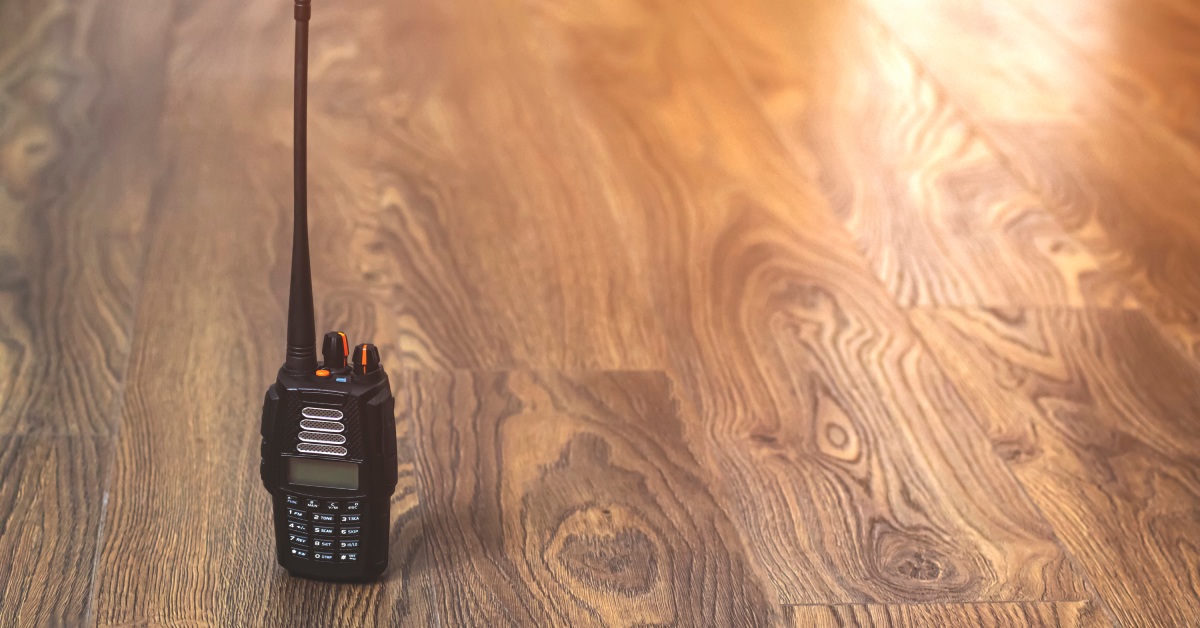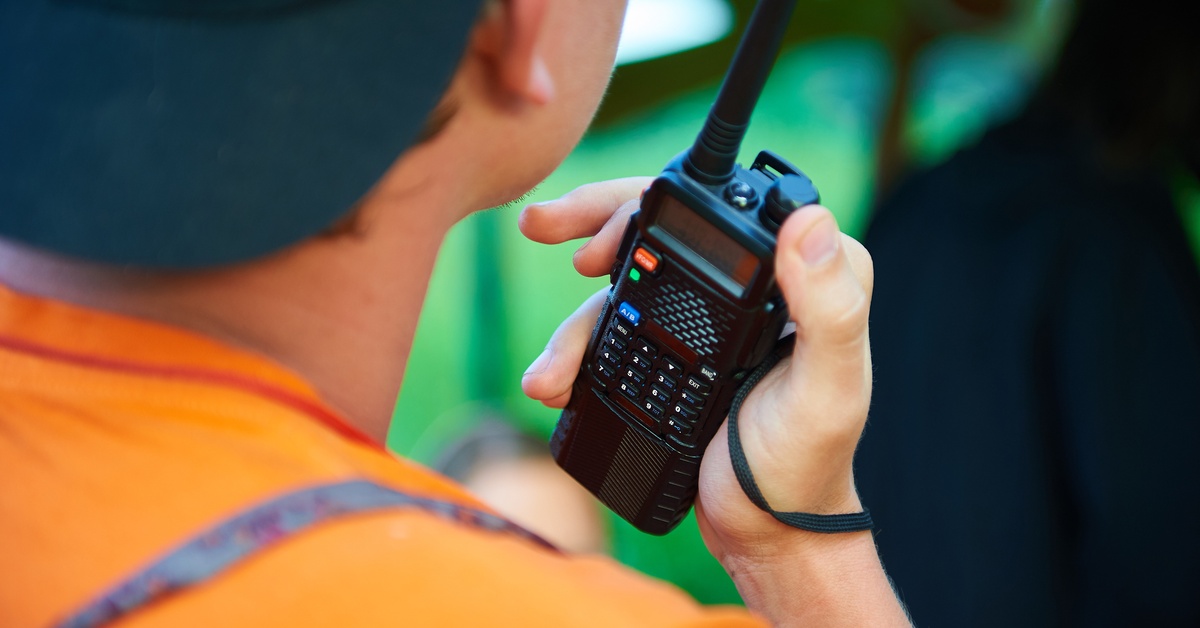For those who rely on two-way radios, staying connected is more vital than ever. Handheld radios are an essential tool across various industries, from public safety to construction. Ensuring your radio batteries last as long as possible can save you time and money. Further, you can always be ready to communicate when needed.
Here’s how to extend the life of your handheld radio batteries so your device is always powered and ready to go.

Understand the Basics of Your Battery
Each battery type has its own characteristics. Here are some of the biggest differences:
- Nickel-cadmium (NiCd) batteries: NiCd batteries are known for their robustness and ability to handle frequent charging, but they’re prone to the memory effect, which can decrease their overall capacity.
- Nickel-metal hydride (NiMH) batteries: These have a higher capacity and are less susceptible to the memory effect, making them preferable for longer usage before requiring a recharge.
- Lithium-ion (Li-ion) batteries: Although they’re more expensive, Li-ion batteries are lightweight and offer high energy density, making them a popular choice for modern handheld radios.
Understanding these differences can influence how you charge and maintain your batteries. By aligning your maintenance practices with the battery type, you can extend its lifespan and efficiency.
Charge Wisely
Charging habits affect your battery’s longevity. A common mistake many users make is leaving their batteries charging overnight or for prolonged periods. While modern chargers often have mechanisms to prevent overcharging, continuously doing so can cause wear and tear over time.
Unplug your battery once it’s fully charged. If your device or charger has an indicator, use it to gauge when the battery reaches full capacity. This simple action can prevent unnecessary stress on the battery and extend its operational life.
Additionally, follow the manufacturer’s guidelines on charging cycles. Some batteries benefit from being fully discharged before recharging, while others, particularly Li-ion batteries, perform best when kept between 40 and 80 percent charge.
Avoid Extreme Temperatures
Extreme heat and cold can negatively impact a battery’s efficacy and lifespan. High temperatures can accelerate the chemical reactions within a battery, leading to reduced capacity and potential damage. Conversely, cold environments can cause a temporary reduction in capacity, making your radio discharge faster than usual.
To extend your battery’s life, store and use your radio in moderate temperatures whenever possible. Avoid leaving your device in direct sunlight or inside a hot car. Similarly, if you’re operating in cold environments, keep your radio warm when not in use, perhaps by storing it in an inner pocket close to your body heat.
Regularly Inspect and Clean
Routine inspection and cleaning of your handheld radio and its battery contacts ensure efficient energy transfer and prevent unnecessary power drainage. Dust and debris can accumulate over time, affecting the connection between the battery and the device.
Make it a habit to inspect your radio’s battery contacts regularly. Use a soft, dry cloth or a slightly dampened cotton swab with rubbing alcohol to clean dirt or grime from the contacts. Allow all parts to dry before reassembling the battery to prevent moisture-related issues. Taking time to perform these routine checkups can help you spot potential problems early and keep your battery in top condition.
Develop a Rotation Strategy
Implementing a structured rotation strategy for your handheld radio batteries can boost their longevity and reliability. Number each battery to keep track of usage with a small sticker or by marking them with a permanent marker. Assign a rotation schedule for each battery to be used for a fixed period before switching to the next. For instance, if you have three batteries, using each for one-week intervals can ensure even wear.
Monitor battery performance during each cycle, noting declines in efficiency or capacity. Keeping a simple log will help you stay informed about each battery’s condition and allow you to make informed decisions for replacements when needed.
Additionally, after each use, recharge and partially discharge batteries as recommended by the manufacturer to maintain optimal performance for the next cycle. With attention and discipline, a well-organized rotation strategy will keep your handheld radios powered and ready for action.

Monitor Usage Patterns
Being aware of how you use your handheld radio can identify areas where you can conserve battery life. Activities like frequent transmission, high volume settings, and excessive use of lighting features drain your battery faster than passive listening. By understanding your usage patterns, you can make informed decisions to conserve energy and extend your battery life.
Consider adjusting settings to more energy-efficient levels. Lowering the volume, reducing the use of backlight, and switching to energy-saving modes when appropriate can all contribute to preserving battery life. Additionally, if your radio has programmable settings, tailor them to optimize power usage based on your specific needs.
Plan for Emergencies
Having a plan for emergency situations will conserve power for when you need it, especially if your work or hobbies involve remote areas where power sources are scarce. Being prepared keeps your communication lines open, even in unexpected situations, allowing you to focus on the task at hand.
Keep extra batteries handy, charging them so they’re ready to go. Consider portable charging solutions, such as solar chargers or power banks, particularly if you’re frequently away from traditional power sources. These tools can provide peace of mind, as you’ll have backup power if needed.
Upgrade When Necessary
Despite all efforts to extend the life of your batteries, there comes a time when replacement is inevitable. Over time, batteries naturally lose their capacity to hold a charge, impacting their performance. Upgrading when necessary keeps your radio functioning optimally and avoids unexpected downtime.
Monitor your battery’s performance and be mindful of signs of deterioration, such as shorter usage times or difficulties in holding a charge. When these symptoms become noticeable, it might be time to invest in a new battery. However, you should always purchase replacements from reputable sources for quality and compatibility with your device.
Stay Powered Up and Connected
Learning how to extend the life of your handheld radio batteries will save you time and money, reduce the need for frequent replacements, and ensure you’re always ready to communicate. Whether you’re in the field, on an adventure, or simply staying prepared, following these tips can extend your battery life and keep you connected.
Are you looking for the perfect battery for your handhelds? Battery Distributors is here with the latest in cell technology. Our APX 1000 battery is the ideal power source for your next outing. Get yours today!











